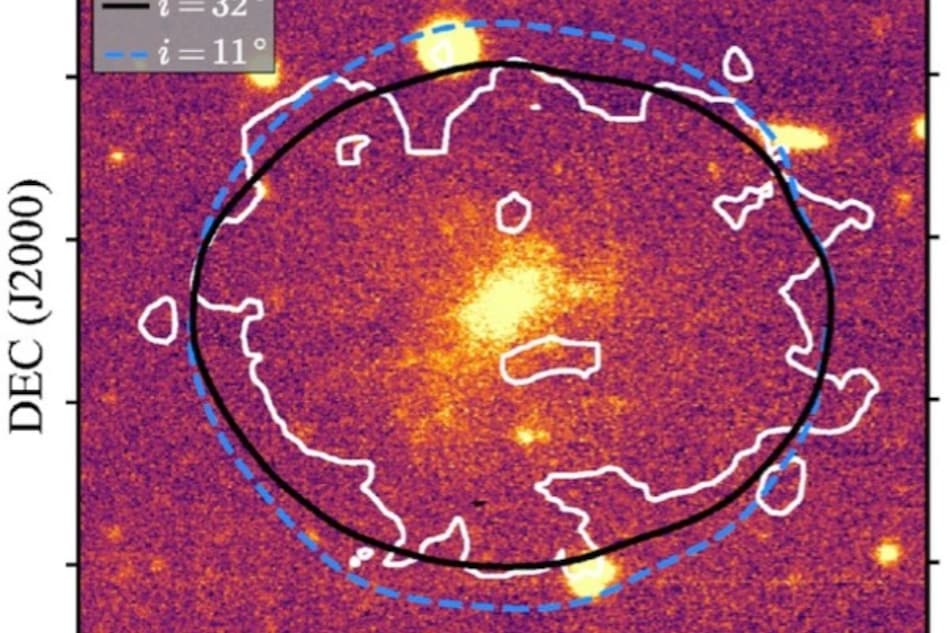A group of worldwide astronomers has reintroduced an alternate theory of gravity known as Milgromian Dynamics or MOND. The majority of astronomers think that something dubbed ‘dark matter’ is responsible for spiral galaxies rotating faster than expected.
According to the laws of physics, galaxies should fly away due to their rapid rotation. MOND, a disputed alternative to Albert Einstein’s General Relativity that needs dark matter to keep galaxies together, is not dependent on dark matter.
Due to the fact that dark matter has never been identified despite decades of sophisticated searches, several hypotheses have been proposed to explain what keeps galaxies together, and a heated dispute rages as to which theory is correct.
The current research, conducted by Dr. Indranil Banik of the School of Physics and Astronomy at St. Andrews, uncovered a high anticipated rotation speed of gas in a dwarf galaxy, which is compatible with the previously discredited MOND hypothesis. The team of Dr. Banik contends that the fast rotation speed anticipated by the MOND theory is consistent with data if the galaxy’s inclination is overstated.
Since dark matter does not provide all the answers, it is prudent to consider other possibilities. Using comprehensive MOND simulations of a disc galaxy comparable to AGC 114905, the new research, published in the Monthly Notices of the Royal Astronomical Society, investigated this.

They discovered that the galaxy might be far closer to face-on than previously believed, indicating that it rotates much quicker than previously stated and reducing the tension with MOND.
In a release issued by the University of St Andrews, Dr. Banik claimed their calculations indicate that AGC 114905’s inclination may be far lower than previously believed, meaning that the galaxy was spinning much quicker than previously thought, as predicted by MOND.
Dr. Hongsheng Zhao of the School of Physics and Astronomy remarked that this galaxy’s very low claimed rotation speed contradicted both MOND and the conventional approach to dark matter. Dr. Zhao said that only MOND was capable of resolving this seeming discrepancy.
Due to the galaxy’s smooth dark matter halo, a comparable “false inclination” effect is unlikely to arise in the traditional dark matter method, according to the new research. The disc is not “self-gravitating” since the stars and gas contribute little to its gravitational pull.
Numerous independent teams have determined that although MOND performed well in the previous testing, the typical technique generated major issues on all scales. According to Pavel Kroupa, a scientist at Bonn University and Charles University in Prague, it extends from dwarf galaxies such as AGC 114905 to cosmic sizes.
Read More : A mirror universe, if exists could explain dark matter and cosmic inflation













